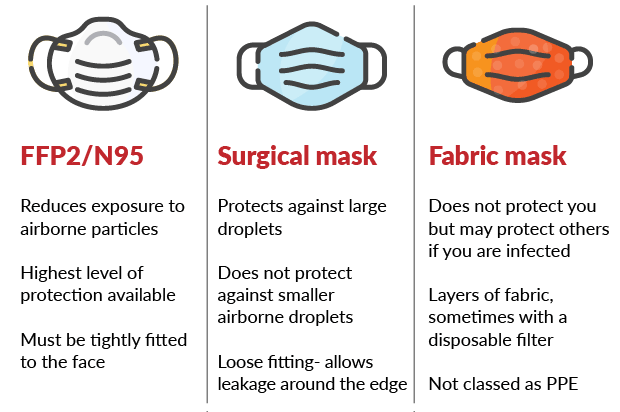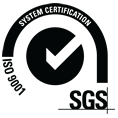Mask type comparison
FFP2 Masks
High filtration performance, once worn tightly against the face.
Good breathable performance.
Protects against Covid.
Also protects against other smaller, non-covid, airborne particles.
Designed to protect both the wearer and others, from the wearer.
Classified as PPE.
EN certified.
A single use product.
Surgical Mask EN 14683
Good filtration performance.
Very good breathability performance.
Protects against Covid.
The looser design can cause leakage, thereby reducing effectiveness.
Primarily designed to protect patients from the mask wearer.
Not suitable for protection against other smaller, non-covid, airborne particles.
Classified as a Medical Device.
EN certified , in 3 Types, I, II and IIR.
A single use product.
Consumer Barrier Mask
Barrier Mask specification was created to provide masks to protect consumers against Covid.
Providing good filtration and breathability protection against Covid.
Suitable for use in non-medical, and non-PPE, work environments.
Not classified as PPE or as a medical device.
Produced in wide option of materials, material layers and designs.
Self-regulated by manufacturers, subject to own testing.
Available in single use and available in washable and re-usable options.
Re-usable masks are an eco-friendly solution.






